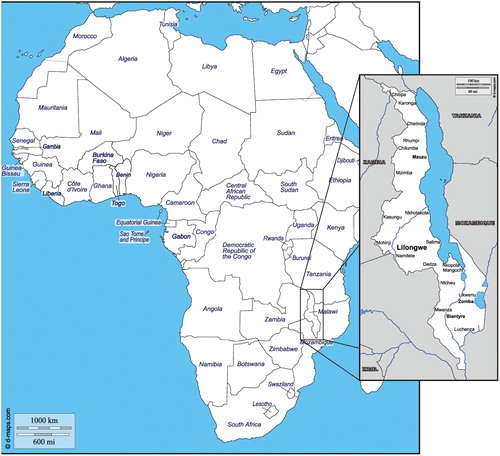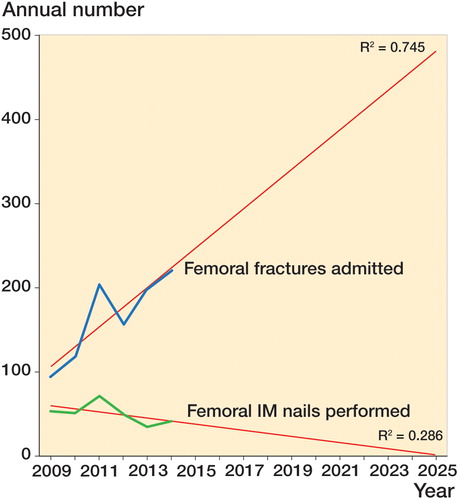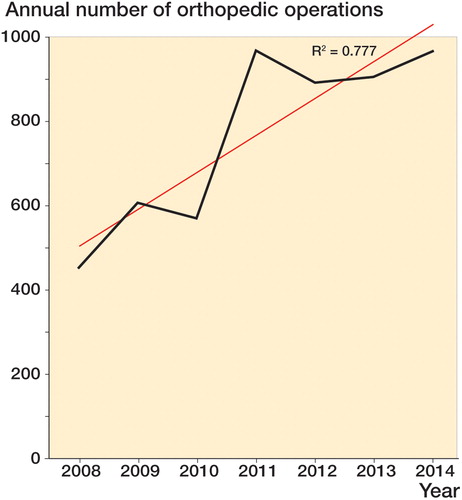Figures & data
Figure 1. Malawi is a densely populated, landlocked country in southern Africa. About twothirds of the length of the country lies along the western shore of Lake Malawi, the third largest lake in Africa after Lake Victoria and Lake Tanganyika. Courtesy of d-maps.com (http://www.dmaps.com).

Figure 2. Observed annual number of adult femoral fractures admitted to KCH (top, blue), and the annual number of femoral IM nails performed at KCH (bottom, green). The straight lines in red are the regression-line estimations with projections for the coming years. An increasing gap is apparent between femoral trauma burden and delivery of service.

Figure 3. The annual number of orthopedic operations performed at KCH from 2008 through 2014 (black) shows a rapid increase in surgical activity after international support for the KCH surgery training program started in 2008, but this appears to have reached a plateau from 2011 onwards due to the availability of only 1 theater. The regression-line estimation (red) shows a statistically signifi cant increase in surgical activity over the whole period (p = 0.009).

Patients admitted to KCH for femoral fracture from 2009 through 2014
